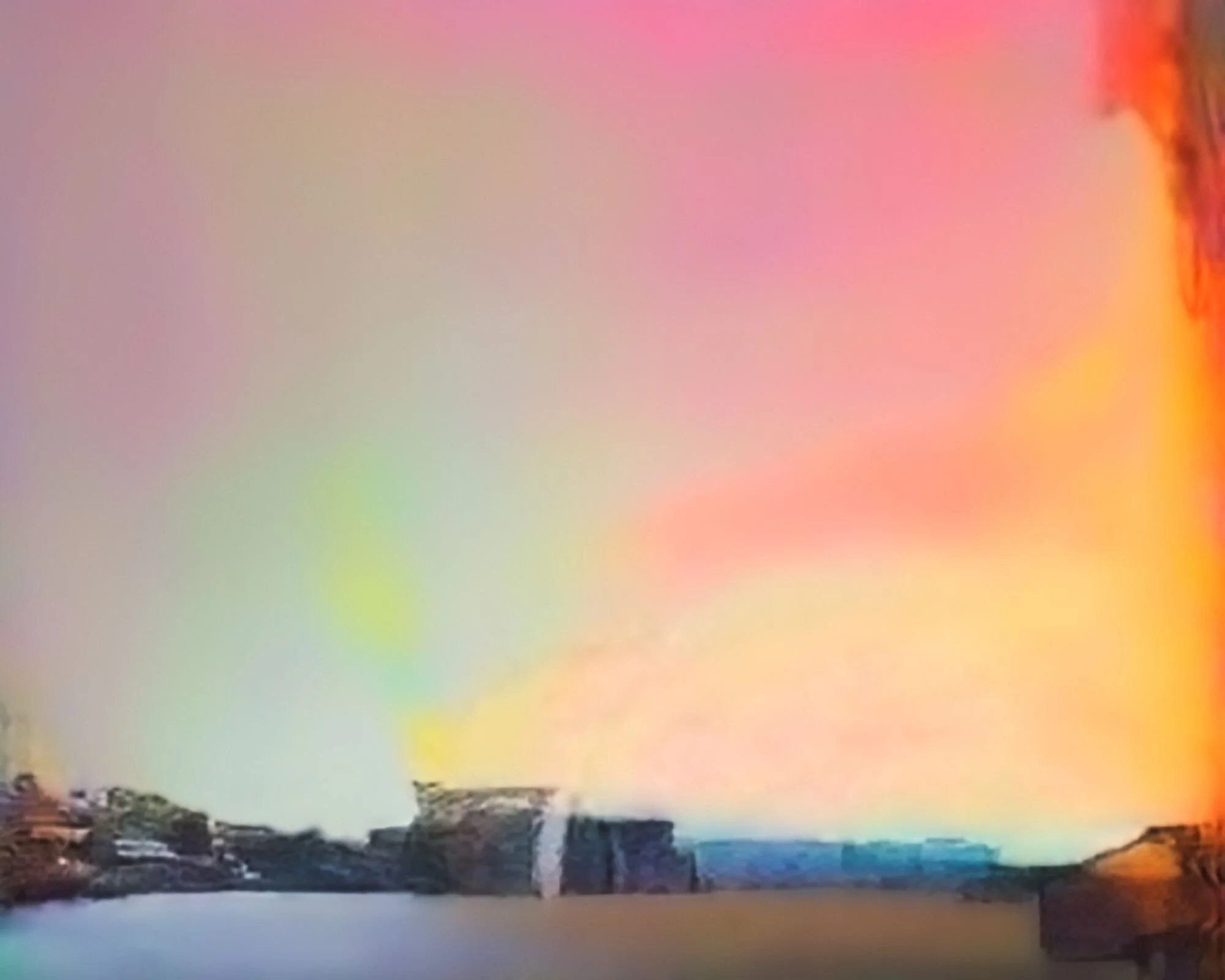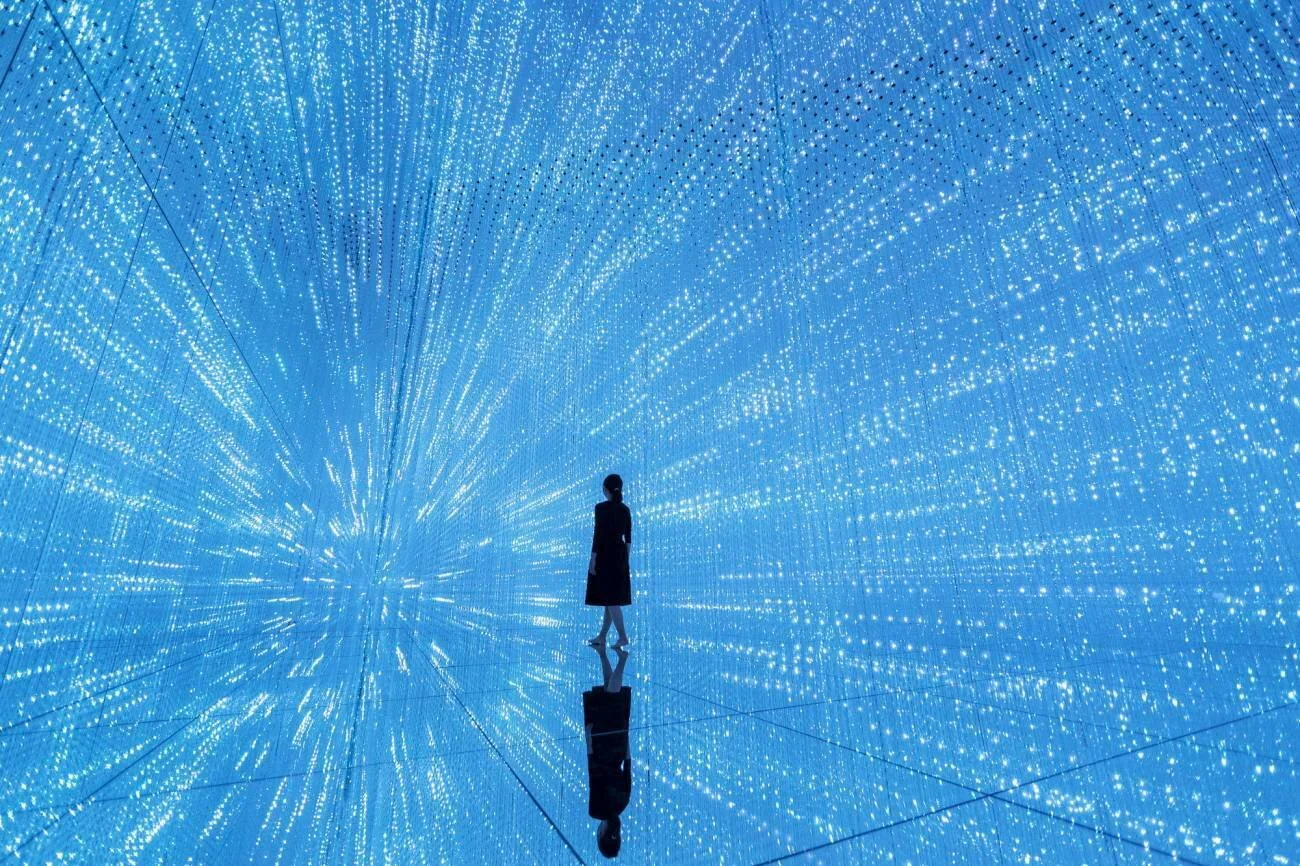Artists Look Into The Future | Creativity Through The Technological Revolution
© Gerhard Richter • Cloud, 1970
Art, science and technology are at a confluence, flowing into the oceans of creation ahead.
Artists are visionary poets. Facing modern necessity, they confront ideas of technological advance by innovating in mediums of expression, towards the building of our future.
Net art, Virtual art, generative art, digital art and other computer-aided techniques are already accepted as art forms in their own right.
But as the boundaries become more translucent, art more than ever needs a reachable definition. Or else, we are likely to fall into unintentional vagueness of diverse creative practices.
Art implies a sensitivity for aesthetics, forged with imagination as a main weapon.
First and foremost, it involves a modification of our representation of the world, through an innovation of the production process, leading artists to create new forms of expression.
Graphic and motion design or 3D projection mapping thus can not be regarded as art practices per se.
Even though they rely on aesthetics and imagination, they also imply known techniques that might have been originally created by an artist.
In 1985, Andy Warhol had already used ProPaint software on a Commodore Amiga to represent Debbie Harry.
Art thus remains the result of centuries of heritage that led contemporary artists to question and reconsider their elders’ visions, who marked the trail on which they are now.
Artists are seers – poets – who dedicate their lives to an endless toil seeking yet unknown beauty, whether it is in their ideas or their own representations.
In the 1870’s, the poet Arthur Rimbaud was already expressing this vision in his Seer Letter.
He also stated: “One must be absolutely modern” in Farewell.
If art requires change - the road to innovation - art’s necessity to be modern is essential.
The meeting with science and technology is at the root of today’s most creative artworks, sometimes worthy of sci-fi dreams.
© Frederik de Wilde
Frederik de Wilde recently created the darkest color ever made using nano-painting technique, as well as a three dimensions model generated out of quantum fluctuations.
© Frederik de Wilde • Quantum Foam#1 (sphere)
He states that « art is the poetics of imagination and science the poetics of reality ».
Further than digital tools, art uses biologics, astrophysics, AI and other contemporaneous sciences.
AI programs can now produce art works in infinitely replicate-able batches.
Trevor Paglen, Adversarially Evolved Hallucination: A Man (Corpus: The Humans), 2017.
Trevor Paglen, Adversarially Evolved Hallucination: Rainbow (Corpus: Omens and Predators).
The result shows abstract colour shapes that conjure Francis Bacon’s characters or surrealists’ disfigured landscapes.
However, it’s not only science and technology that are influencing art.
Art also brings its own innovations on the table.
Prophesising concepts of the future, artists often propose inventions before they appeared on the market.
In 1999, in a work called Genesis, Eduardo Kac encrypted a sentence of the Book of Genesis into an artificial gene. The Guardian recently stated that we could soon store information in DNA, cheaper and more efficiently than in digital devices.
Halfway between tech poetry and artistic innovation, Tomás Saraceno inspires engineers and astronomers in their researches.
© Pinterest • Tomás Saraceno’s Aérocène launching at White Sand Dunes, 2015.
With Aérocène, he explores how wind currents and air temperatures differences could be used as transports means.
© Andrea Rossetti, 2013 — Hybrid Webs • Tomás Saraceno’s three dimensional spider webs.
He also compared the patterns of spider webs with galaxies’ structures, inviting astronomers to consider terrestrial nature’s systems to understand the universe. For more references, On Air exhibition showed a retrospective of his work.
Artists currently work at finding the most modern ways to represent concepts through real life applications. Like sci-fi, art has never been so close to becoming alive.
© teamLab • The Infinite Crystal Universe
The artist’s inventive search for beauty originally modifies our perception of the world, through a new representation of it.
Enhanced by and influencing sciences and technologies, it is now beyond the frontier where it actually modifies our real world.
Reminding us of The Matrix, we can already imagine our minds uploaded on the cloud, our bodies moving through abstract representations of space.
TeamLab gives us a snapshot of how this could feel, with The Infinite Crystal Universe.
Now what if Edvard Munch had been able to give life to The Scream? Or Picasso to his deformed characters?
As artists are likely to come up with extraordinary creations, the world of tomorrow’s shape remains to be seen.
What is for sure, our future will emerge from the imagination of artists.









